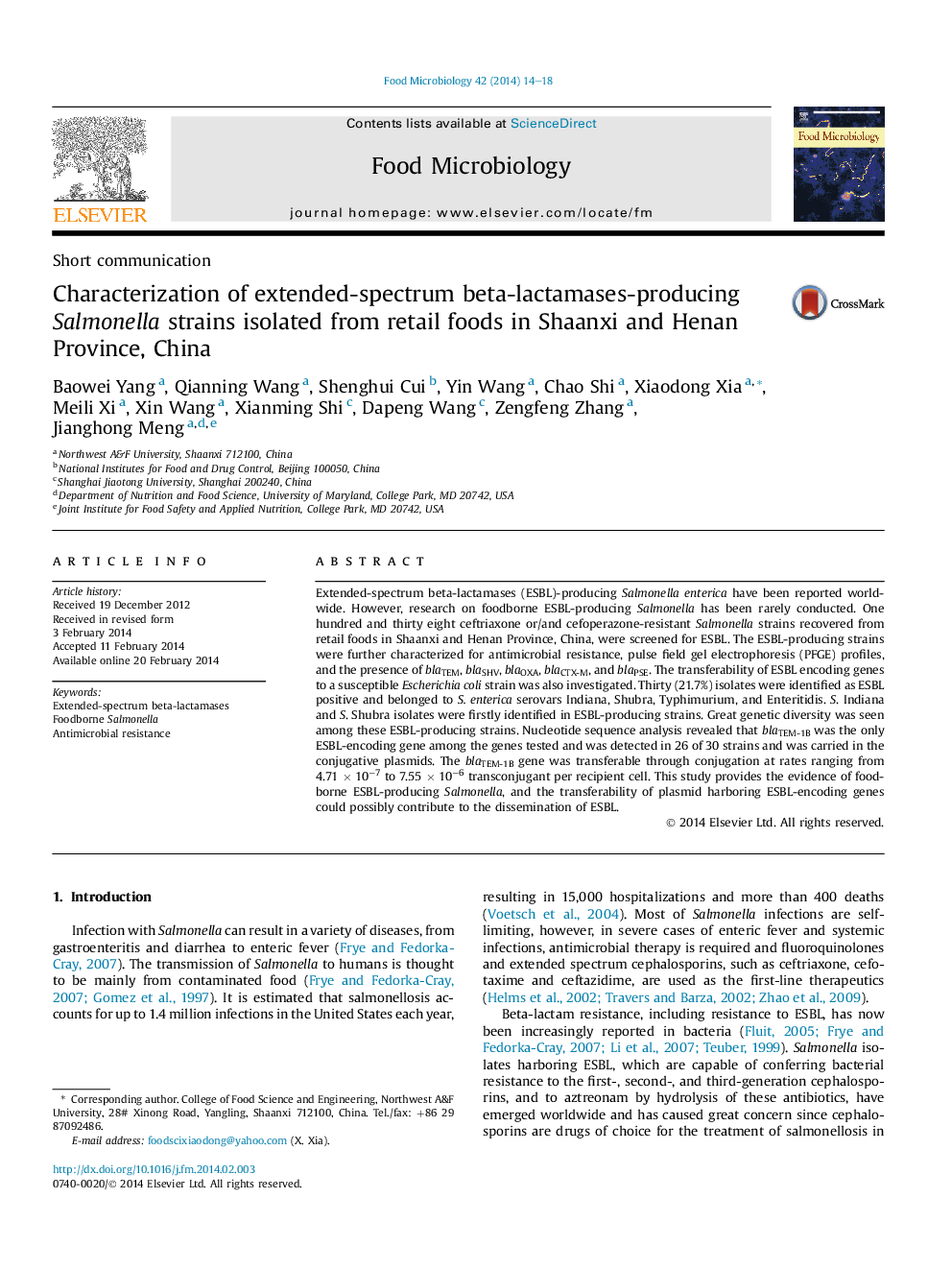| Article ID | Journal | Published Year | Pages | File Type |
|---|---|---|---|---|
| 4362875 | Food Microbiology | 2014 | 5 Pages |
Abstract
Extended-spectrum beta-lactamases (ESBL)-producing Salmonella enterica have been reported worldwide. However, research on foodborne ESBL-producing Salmonella has been rarely conducted. One hundred and thirty eight ceftriaxone or/and cefoperazone-resistant Salmonella strains recovered from retail foods in Shaanxi and Henan Province, China, were screened for ESBL. The ESBL-producing strains were further characterized for antimicrobial resistance, pulse field gel electrophoresis (PFGE) profiles, and the presence of blaTEM, blaSHV, blaOXA, blaCTX-M, and blaPSE. The transferability of ESBL encoding genes to a susceptible Escherichia coli strain was also investigated. Thirty (21.7%) isolates were identified as ESBL positive and belonged to S. enterica serovars Indiana, Shubra, Typhimurium, and Enteritidis. S. Indiana and S. Shubra isolates were firstly identified in ESBL-producing strains. Great genetic diversity was seen among these ESBL-producing strains. Nucleotide sequence analysis revealed that blaTEM-1B was the only ESBL-encoding gene among the genes tested and was detected in 26 of 30 strains and was carried in the conjugative plasmids. The blaTEM-1B gene was transferable through conjugation at rates ranging from 4.71Â ÃÂ 10â7 to 7.55Â ÃÂ 10â6 transconjugant per recipient cell. This study provides the evidence of foodborne ESBL-producing Salmonella, and the transferability of plasmid harboring ESBL-encoding genes could possibly contribute to the dissemination of ESBL.
Related Topics
Life Sciences
Agricultural and Biological Sciences
Food Science
Authors
Baowei Yang, Qianning Wang, Shenghui Cui, Yin Wang, Chao Shi, Xiaodong Xia, Meili Xi, Xin Wang, Xianming Shi, Dapeng Wang, Zengfeng Zhang, Jianghong Meng,
